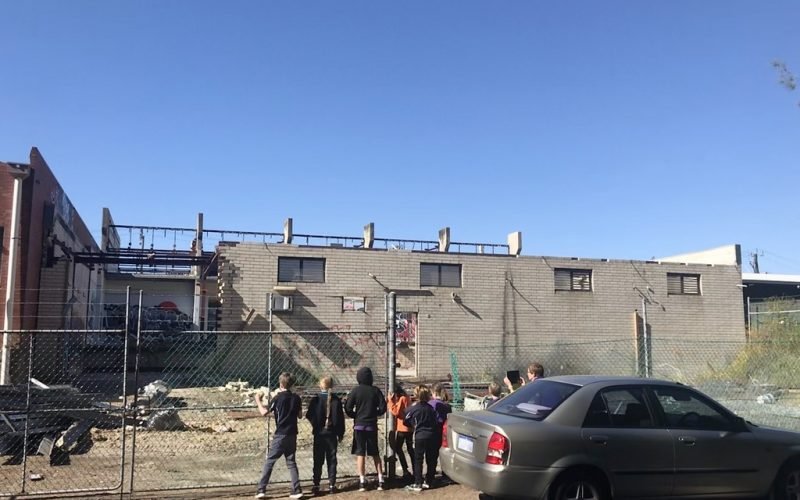Which lifeways are lost when a building is demolished?
Shared by JANE MEREWETHER AND JAYNE KAIKO
Which lifeways are lost when a building is demolished? The 50-year-old building across the road from the school has been allowed to progressively deteriorate. It was recently demolished so it can be replaced by a new building. The children are upset by this and asked us, ‘Why don’t they fix buildings when they get sick?’ Why do they build/knock down, build/knock down, for ever and ever? What will happen to the homeless people, and the birds, cockroaches, rats and bacteria who live there?
The insatiable capitalist quest for the new includes buildings; even buildings are disposable. Vibrations from the demolition are felt in the classroom. Dust billows into the air and enters the classroom where children cannot help but breathe it in. They are part of the process, whether they like it or not.
Which lifeways are lost when a building is demolished? And how do we “work within our disorientation and distress to negotiate life in human-damaged environments” (Tsing, 2015, p. 131)?
References
Tsing, A. (2015). The mushroom at the end of the world: On the possibility of life in the capitalist ruins. Princeton, NJ: Princeton University Press.

